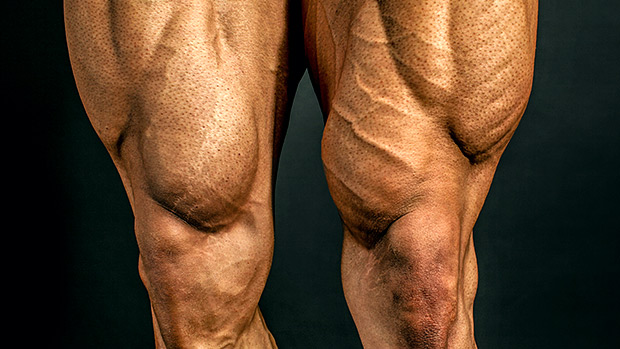Resistance band training can be a good option for at-home workouts, hotel gym training, or just for a pre-Vegas pump. They're also great for adding some load to your warm-ups before heavy strength workouts.
Let's not mess around with light therapy bands though. Here are a few ways to incorporate some heavy bands into your lower-body training.
Here's a useful way to set up a heavy band, providing both comfort and stability. Simply place a plate over the center of your band and stand on it. Compare doing this to just standing on a band and you'll instantly feel the difference. The band will also stay closer to shoulder width throughout any exercise.
Resistance bands have many uses. One is the ability to accelerate through increasing resistance. This can prime your nervous system, activate high-threshold motor units, and potentiate your whole body for a better workout.
Banded single-leg RDLs are an excellent way to prepare for a heavy lower-body workout, especially if you do a few explosive reps, allowing the band to accelerate you back down. This will overload the stretch-reflex mechanism and prime your muscles for a good workout.
Because single-leg RDLs done this way provide an element of stability (versus your standard single-leg deadlift) these can also be used as a teaching tool to improve single-leg stability and strength.
This is an excellent way to warm up your quads and get a bit of blood in there before your heavy lifts. Because of the angle of the band, there's even greater quadriceps emphasis. As an alternative to the leg extensions and sissy squats, these can make for an excellent assistance exercise for your lower-body workouts.
If you're at home or in your Vegas penthouse suite wondering how you could do these without an Olympic-size plate, all you need is something flat and strong to place over the band. Or you could just step on the band.
Cable pull-throughs are on par with 45-degree back extensions and reverse hypers for developing posterior chain strength in a manner that limits load through your spine. Loop a band around a post somewhere and boom... you've got yourself an effective pull-through setup.
Because of the ascending resistance of the band, doing pull-throughs in this way tends to bias glute activation at the top, although you'll get a nice stretch and a little load through your hamstrings at the bottom too. Excellent as a warm-up drill, to teach hip hinge technique, or to burn out your glutes.
Open up your tight adductors and wake up your sleepy glutes with these. Here you're combining a band kneeling hip thrust with a great hip-opening drill. Throw these into your warm-ups for healthy hips and knees. They'll also work as a high-rep booty-pumper – just don't make eye contact.
A resistance band is one of the best ways to progress and load a bird-dog. So if bird-dogs are a frequent part of your training anyway, here's how you can make them harder.
You'll be challenging the collapse of your extended arm and leg. This will help fire up everything from your hamstring to your opposing-side shoulder, and everything else in between.
Bird-dogs are part of Professor Stuart McGill's "big three" core exercises. It's good to add them into your warm-ups, at the end of workouts, or supersetted with other exercises for long-term back health. Add a heavy band like this for a bigger challenge.





